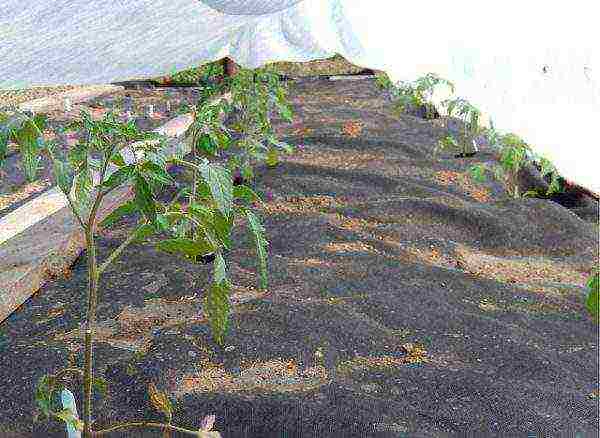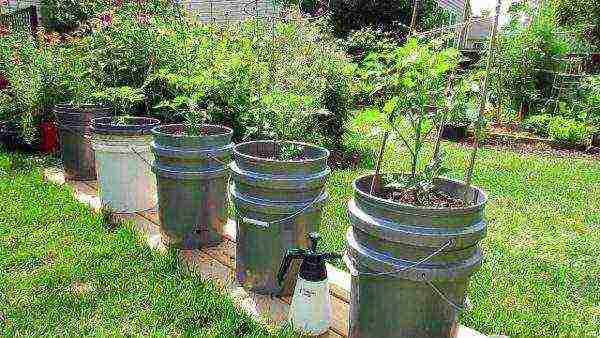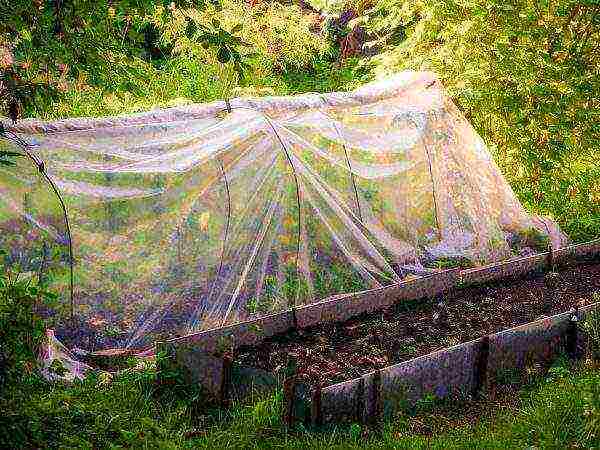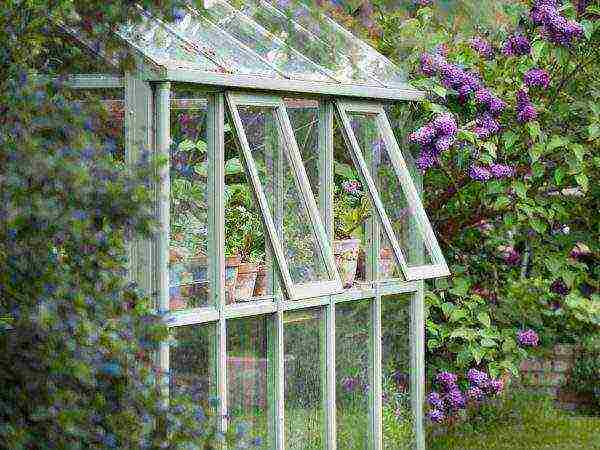Content
Tomato has long been recognized as a favorite vegetable among gardeners; it is grown under different weather conditions. The key to a good harvest both in the open field and in the greenhouse is the seedlings, which not everyone likes to grow. The easiest way is to plant purchased bushes, but many different nuances can lie in wait here. After all, you will not always be able to buy high-quality seedlings that will fully meet the desired criteria. It is best to grow tomatoes for seedlings on your own, then you will know for sure which fertilizers have been applied, and which ones should be added more.
There are so many different ways and techniques to plant vegetables these days. Not deprived of attention and tomato. He was especially loved and most of the experiments were carried out on it. Its cultivation is carried out in a bucket, and in paper, and even under a film.
Popular ways to plant and grow tomatoes
Tomatoes are grown in different ways, all of them simply cannot be counted. Each gardener can share his own, known only to him, the secrets of planting and growing tomatoes. We will consider the most popular and well-known methods, the use of which is known to many.
Most growing methods are based on saving space, not everyone has a wide window sill for growing seedlings, or on the unwillingness to fiddle with seeds and picking seedlings. It was with these motives that experiments with seeds and ready-made seedlings began:
Galina Kizima's method
Perhaps the most famous non-standard method of growing tomato seedlings in a city apartment is the method of Galina Kizima. The basis is the minimum possible use of soil and complete saving of space when germinating tomato seeds. The so-called "swaddling" is quite effective, and other vegetables can be grown by this method.
Seed germination can occur without soil, the process proceeds perfectly on toilet paper.
To do this, several layers of ordinary toilet paper are spread on polyethylene and moistened with a spray bottle. Pre-soaked tomato seeds are laid out on it, the distance between each seed should be at least 1 cm, and an indent of 2 cm is made from the edge. After that, the seeds are covered with several layers of paper and moistened in the same way.
Next, the resulting ribbons with seeds are twisted with tight rolls and stirred into some container and sent to a bright and warm place. After the shoots appear and the plants get a little stronger, they will need to be "transplanted" into separate diapers.
To do this, use pieces of polyethylene of a square size with a side of 20 cm. Pour soil into the center of the square, place a seedling in it so that all the leaves are above the polyethylene. After that, the bottom edge is tucked, and then the side edges are tucked so that a tight roll is obtained. Before this, I water the soil abundantly, and then do not wet it for 10-14 days.
Seedlings grown by this method do not require picking, the stems are strong with a large number of leaves, but the rhizome develops poorly. After the appearance of the third pair of true leaves, tomato seedlings are planted in a greenhouse.
Plants are transplanted by the transshipment method, while the hole should be in size, like an earthen lump around the rhizome.Further cultivation is carried out completely without moisture.
Before planting, it is worth cutting off a few lower leaves, and laying out the seedlings with the tops of their heads strictly to the north. Before that, a glass of wood ash and a pinch of potassium permanganate are placed in each prepared hole, everything is poured with a bucket (!) Of water, and only when the water is absorbed do the plants begin to be planted.
How to grow tomatoes under cover material in a greenhouse or soil
 Tomatoes under the covering material
Tomatoes under the covering material
Tomato seedlings are also grown in a seedless way under a covering material or film. As soon as the ground warms up a little, prepare the bed. They loosen the soil, apply fertilizers there, and moisten. Prepared and processed seeds are sown in shallow grooves, by a maximum of 1 cm. The grains are sprinkled with a layer of soil, watered with warm water and covered... As a covering material, you can use agrofiber or polyethylene. In this way, a greenhouse effect is created, in which the soaked grains sprout much earlier.
Sowing seeds is carried out at a sufficient distance from each other, since transplantation with this method is not carried out.
The method of growing under cover material is designed to save time; it is used more in the southern regions and the middle lane.
Bucket growing method
Growing tomatoes in buckets, according to gardeners' reviews, gives significantly higher yields. Experiments in this regard have been repeatedly carried out, which have confirmed this fact. The method is suitable for greenhouse cultivation; in open space, tomatoes do not bear fruit so abundantly.
It is no longer possible to determine exactly who initiated this method of cultivation. They began to use it due to the lack of planting space for grown seedlings.... A mixture of soil from the site and compost is collected in a bucket, a tomato sprout is planted, watered abundantly. Throughout the entire period of growth until fruiting, as it dries, the soil is periodically watered, during the formation of the ovary, watering is increased. The method allows you to significantly extend the fruiting period of any variety, while vegetables can be grown not only in a greenhouse, but also on balconies and loggias.
 Tomatoes in buckets
Tomatoes in buckets
There is an officially registered method; initially prepared buckets of soil mixture are used for it. It should be noted that according to the recommendations, it is better to dig the container into the ground by 25-30 cm.
With this growing of tomatoes, it is important to carry out a comprehensive feeding of boles three times. Fertilizers in liquid form must be poured directly under the root, it is important to ensure that moisture does not get on the stem and leaves of the plant.
The described methods are recognized as the most common and effective for growing tomatoes in various weather conditions.... Their effectiveness has been confirmed by both novice gardeners and specialists in this business.
You can plant and grow tomatoes and other vegetables under any conditions. This can be done even when there is a catastrophic lack of space on the personal plot or it is absent altogether. To do this, it is enough just to exactly follow all the instructions and tips.
Many gardeners, when planting and caring for tomatoes, are faced with various problems that arise as a result of improper actions. We will focus on the most common mistakes made by vegetable growers.
1. Rough purchase of seeds. If you are growing tomatoes in large quantities, it is better to choose hybrids. First, they suffer less from various diseases. Secondly, their yield is 30% higher than that of varietal tomatoes. However, you should not completely abandon the varieties: many of them have excellent taste and original shape. It is wrong to plant varieties for open ground in a greenhouse and, conversely, greenhouse hybrids - in open ground. Bottom line: low determinant varieties are not able to master the volume of the greenhouse and give a significantly lower yield compared to the greenhouse.Outdoor greenhouse hybrids will also fail to realize their potential. Reason: short growing season, sudden temperature changes, poor pollination due to high air humidity. 3. An inexperienced grower will buy the thickest plastic wrap for the greenhouse, considering it the most reliable. It is better to use unstabilized hydrophilic polyethylene film. Its advantageous difference is that a droplet condensate is formed on the surface. In other words, the resulting droplets roll down without forming droplets. In addition, antistatic additives repel dust, maintaining the transparency of the film for a long time. It loses less heat at night, which is facilitated by a layer of moisture on the inside. All this has a beneficial effect on the harvest. 4. Do you think if more light and heat is better for seedlings? Not entirely true. Tomato seedlings grow better at 15-16 hours of illumination and a night temperature of 8-10 ° C. 5. Sellers often offer tomato seedlings with inflorescences, proving that the buyer will get an early harvest. This is wrong. When transplanting on overripe seedlings, you will need to remove the inflorescences and build up the root system. Moreover, the plants should be watered abundantly immediately before planting. If you do this a day or two earlier, the stems will become juicy and brittle, which will increase their fragility. Water is poured into the prepared hole and the tomatoes are literally planted in the mud so that they take root better. If you water them from above, a crust forms and the plants die. 6. Gardeners often mistakenly water tomatoes daily like cucumbers. In fact, they need watering rare, but abundant - once every 7-10 days. In this case, water should not fall on the leaves. The air humidity in the greenhouse increases, which contributes to the development of late blight on tomatoes. 7. Late with pinching. It is necessary to remove stepchildren at a shoot height of 3-4 cm - no more. Another misconception is that you need to leave hemp. In the place where they remain, pathogens immediately appear. It is more correct to pluck the stepsons at the very base. 8. Incorrect plant formation. Vegetable growers sometimes feel sorry for removing strong lateral shoots or pinching the top. The result is a branchy bush without fruit. 9. Formation of powerful shoots and large leaves to the detriment of fruiting. This happens more often if manure was brought under the tomatoes, so it is better to refuse this. It is important that plants receive magnesium on time. Its disadvantage is easy to notice by the darkened leaf tissue between the veins. In this case, foliar feeding with magnesium sulfate (0.5%) should be carried out. 10. In protecting plants from pests and diseases, one should not abandon prophylaxis, one should not wait for symptoms of damage and damage. In greenhouses, the first preventive treatment should be carried out during the seedling period. 11. You should not harvest seeds of hybrids for further cultivation - nothing good will come of them.
Starting a greenhouse is troublesome.
It is especially difficult when your husband is not around and you have to do everything yourself. Of course, there is not enough energy to build a "house" for tomatoes. And I decided to grow tomatoes under light cover. Here's what I did.
Digging a trench
First, I dug a groove deep in a shovel bayonet and about 60 cm wide (two shovel bayonets). The bottom and sides of this trench were covered with straw to keep warm (although if it is not there, it is quite possible to use old newspapers, folded several times).
I watered the seedlings abundantly so that they could be easily removed from plastic cups - I grow them in 0.5 liter beer containers. Taking out the tomato bushes in turn, I placed half of them together with a lump of earth along one side of the groove, about 40 cm apart. The second half is on the other side, but so that the plants are between those placed earlier, that is, in a checkerboard pattern.
Then she covered the trench with earth mixed with humus, ash (a glass on a bucket of soil) and superphosphate (a handful on a bucket).
Reference by topic: Tomatoes - planting and leaving from A to Z
Putting the board
On top of the ground between the plants, I put a board along the entire length of the groove. If the trench is long and the boards are short, then you can take several, tightly joining each other.
This board performs several functions at once. Firstly, it protects the soil from drying out, secondly, it does not allow weeds to grow in the aisle, and thirdly, when watering it protects the soil from erosion and the formation of a soil crust. By the way, immediately after planting, the seedlings must be watered, and the water must spread over the board.
We build a greenhouse for tomatoes
After that, you need to build a semblance of a greenhouse. At the ends of the ditch in the middle, put two blocks or drive in stakes - all this should be the same height, approximately to the waist. On these supports, we need to put a pole along the entire length of our bed and fix it with nails. If there is no suitable length, you can tie two poles with aluminum wire.
On this pole, I throw a non-woven covering material - lutrasil, which can not be touched until the first watering. The complete cover can be removed when clear, sunny weather sets in. When the bushes grow to the pole, I tie them to it with linen twine. Usually this is enough, since I grow mainly determinant - undersized varieties of tomatoes. But if the plants are taller, the problem is solved simply: you need to drive the stakes higher and raise the pole.
Caring for tomatoes grown in this way is no different from usual. From time to time, it is necessary to break out the stepsons, and in the second half of summer, pinch the tops of the plants so that the fruits are poured faster. I also have a traditional top dressing - an infusion of herbs with the addition of ash (a couple of glasses per barrel).
Reference by topic: Indeterminate tomatoes - tall varieties
Iodine for tomatoes
It turns out that iodine stimulates the formation of ovaries in tomatoes, which naturally increases the yield.
I discovered this by accident, having processed half of the bushes from late blight (there was simply not enough iodine for the second). I used such a solution - 1 drop of iodine tincture per 3 liters of water. The plants that I sprayed had flower clusters that developed faster and had more ovaries.
Now I process all the bushes and get excellent harvests. I also water the tomatoes at the root with iodine water (3 drops per bucket), spending 1 liter per bush.
Below are other entries on the topic "Cottage and garden - do it yourself"
Growing tomatoes in cylinders (in "two floors"): reviews: Growing tomatoes in cylinders - ... Tomatoes before October: Autumn tomatoes At the end of summer, many ... Harvesting their own tomato seeds - tips: Their seeds from their tomatoes To everyone ... Early tomatoes without a greenhouse and others "Tomato" tips: Growing tomatoes - gardener advice ... Garter tomatoes with my own hands - my way: How to tie up better and faster ... Harvesting seeds from store-bought cherry tomatoes and growing them: Is it possible to grow cherry tomatoes ... How to pollinate tomatoes correctly: Pollination of tomatoes How to pollinate flowers , to…
Subscribe to updates in our groups.
Let's be friends!
Almost every gardener grows tomatoes at home. It can be difficult to grow a crop due to the plant's capriciousness to temperature and humidity. To obtain a large amount of high-quality harvest, you can use a tomato shelter.

Shelter for a tomato
Why cover tomatoes outdoors
The reasons why you can cover plants outdoors are:
- rapid freezing of the soil;
- unsuitable climatic conditions;
- insufficient heat for a certain variety;
- the need to close the plant from the sun.
When the tomatoes are sheltered in the open field, the plant receives the necessary amount of heat and is protected from the sun. It is necessary to cover the plants during periods when the air temperature drops and the weather worsens.You can also cover the plantings during the period of frequent rains.
What kind of shelter should there be
The main criterion is temperature. The shelter should provide warmth for the vegetables. The soil should warm up well in the spring.
The structure should not interfere with the cultivation of the soil around the plants. It is best to cultivate seedlings in a greenhouse. To avoid too high a temperature, the building must be ventilated.
It is best to cover tomatoes using a frame made in the form of metal arcs stuck into the ground. Such a greenhouse can be either permanent or temporary.
Ground requirement
Before you start planting and covering tomatoes, you need to carry out preparatory steps. The first step is soil selection. It should be sufficiently loosened and moist.
You can use peat or humus to prepare the soil for planting tomatoes. They can be used as organic fertilizers. The land can also be cultivated with wood ash.
When to start planting a tomato under cover
You can plant seedlings directly under the covering material. In this case, it is better to start planting at the end of May, when the soil has warmed up enough. The plants should already have several leaves, and the roots should be sufficiently developed. If the covering material is polycarbonate, then it is better to plant in mid-May.
It is better to plant seedlings in the afternoon or early evening. A warm, cloudy day would be ideal for disembarkation. This will allow the plants to quickly settle in a new place.
Greenhouse selection
The main differences are the material from which the shelter is made. Covering material can be in the form of polyethylene film, glass or polycarbonate. The frame is made of wood or metal.
Frame

Choose the right frame materials
The choice of materials depends on the purpose and time of use of the cover. The advantages of a timber frame:
- material availability;
- practicality;
- ease of manufacture.
The wooden shelter must be treated with varnish or paint. This is done so that the material does not deteriorate from moisture. It is better to use such a greenhouse only during warm periods. With this operation, it will last 4-5 years.
Advantages of a metal frame over a wooden one:
- the ability to withstand heavy loads;
- does not absorb water;
- does not change its shape from the effects of weather conditions;
- longer lines of operation.
Such a frame also needs to be coated with paint or varnish to protect the material from rust. You can operate a shelter made of such material for more than 10 years.
Coating
The most popular material is film. This is due to its low cost and ease of use. The film is easy to put on the frame, it is moisture resistant and protects plants well. There is a reinforced film that can be used in all climates
Another popular material is glass. You need to choose a thick and strong coating, at least 4 mm thick. Do not take too fragile glass due to its unreliability.
- the disadvantages of this material are:
- weak protection from direct sunlight;
- impossibility of mounting on a metal frame;
- risk of destruction in the cold season.
A modern material that can be used to cover plants is polycarbonate. It is strong and durable. It is most effective to use a honeycomb type of coverage.
The honeycomb structure of the material allows direct sunlight to be evenly distributed over the surface, which favorably affects the development of plants. Polycarbonate keeps warmth very well inside and protects the plantings well from cold air penetration.
The popularity of the material is due to its ease of installation and its reliability. The material does not absorb moisture and does not change its shape when exposed to temperature. It can be used in any climatic conditions at any time of the year.
When to harvest
If the plants grew under cover, then in most cases they mature much faster. Most often, the fruits are already ripe in August and early September.
The exact period may vary depending on the type of vegetable. There are fast-growing types of tomatoes that can be harvested at the very beginning of August. The development of the plant is strongly influenced by the climate.
Conclusions.
Covering the tomatoes will allow you to get a lot more harvest. The fruits will be more juicy and tasty.
You can build a shelter yourself. Materials are available and not expensive. If it is not possible to cover tomatoes in the open field with a homemade greenhouse, then ready-made structures are sold in stores.


